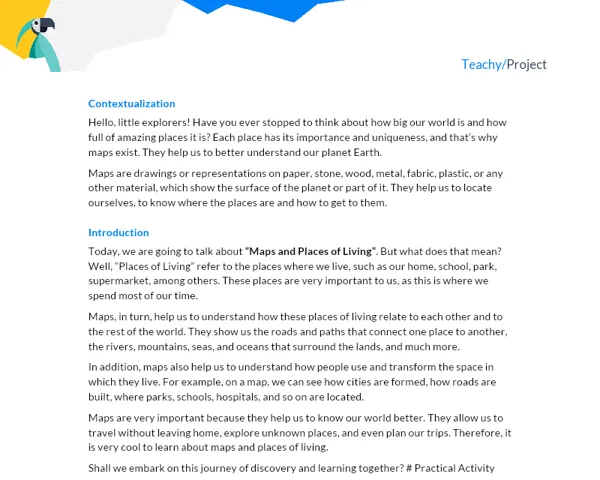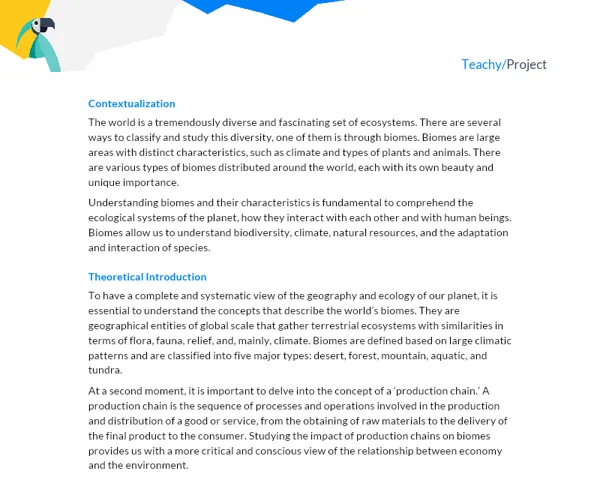Contextualization
Let's embark on a fascinating journey through the world of production and consumption. But what exactly does this mean? Production is the set of activities that transform natural resources into goods and services used by us, human beings. Consumption, in turn, is the action of using these goods and services to satisfy our needs and desires.
Production and consumption are essential parts of our daily lives. When you go to the bakery and buy a loaf of bread, for example, you are participating in this process. The bread you consume was produced from wheat, water, and other natural ingredients. But to reach the bakery, the wheat had to be cultivated, harvested, processed, transported, and sold. This is the production process.
The Importance of Production and Consumption
Now, you may be wondering, 'Why should I learn about this?' Well, understanding production and consumption is fundamental to comprehend how the world works. We are all producers and consumers, in one way or another. More than that, production and consumption have a significant impact on our planet.
The way we produce and consume affects the environment, the economy, politics, and even our health. For example, the production of certain products can cause ecosystem degradation and the emission of gases that contribute to global warming. Furthermore, how we consume can influence the distribution of wealth and power in our society.
So, you see, learning about production and consumption is not just about understanding how things are made and how we buy them. It is also about understanding the world around us and how we can make better choices for ourselves and for the planet.
Practical Activity
Activity Title: 'Small Producers, Big Consumers'
Project Objective
The objective of this project is to provide students with a practical experience of how production and consumption work. They will work in groups to create a small business, which will involve the production of a good or service and its subsequent sale to their peers. In this way, students will learn about the production process, the importance of teamwork, the value of money, and how to make conscious consumption choices.
Detailed Project Description
Each group will be responsible for creating a small company. They should develop a business plan, define which product or service they will offer, produce or perform the service, set the price, and finally, sell to their classmates.
The product or service does not need to be something complex. It can be a snack, a drink, a game, an artistic activity, etc. The important thing is that students go through all stages of the production and sales process so that they can experience in practice the concepts of production and consumption.
Required Materials
The necessary materials will vary according to the type of product or service chosen by the group, but in general, students will need:
- Materials for the production of the product or performance of the service (ingredients, tools, etc.)
- Advertising materials (posters, flyers, etc.)
- Money (which will be used to purchase the products or services)
Detailed Step-by-Step for Activity Execution
-
Group Formation and Product or Service Definition: Students must organize themselves into groups of 3 to 5 people. Each group must decide which product or service they will offer.
-
Business Plan Development: Each group must develop a simple business plan, which should include the business name, the product or service offered, the production cost, the selling price, and a marketing strategy (how they will advertise the business to their peers).
-
Production or Service Performance: After the business plan is approved by the teacher, the groups must start the production or performance of the service.
-
Price Definition: The groups must set the selling price of their product or service. The price should be enough to cover the production cost and generate a small profit.
-
Advertising and Sales: The groups must create advertising materials (posters, flyers, etc.) and use marketing strategies to sell their product or service to their classmates.
-
Analysis and Reflection: At the end of the project, students must analyze the experience, answering questions such as: How was the production process? What were the main difficulties and learnings? How was the sales process? How much money was raised and how will it be divided among the group members?
This activity provides an active learning environment, where students are protagonists of their own learning. Furthermore, it stimulates socio-emotional skills, such as teamwork, communication, time and resource management, and problem-solving.
Delivery Format
Students must submit to the teacher the developed business plan, along with a reflection on the experience lived. The reflection can be done in the form of a brief report, a drawing, a presentation, or any other format that the group considers appropriate. The important thing is that they can express what they have learned throughout the project.


